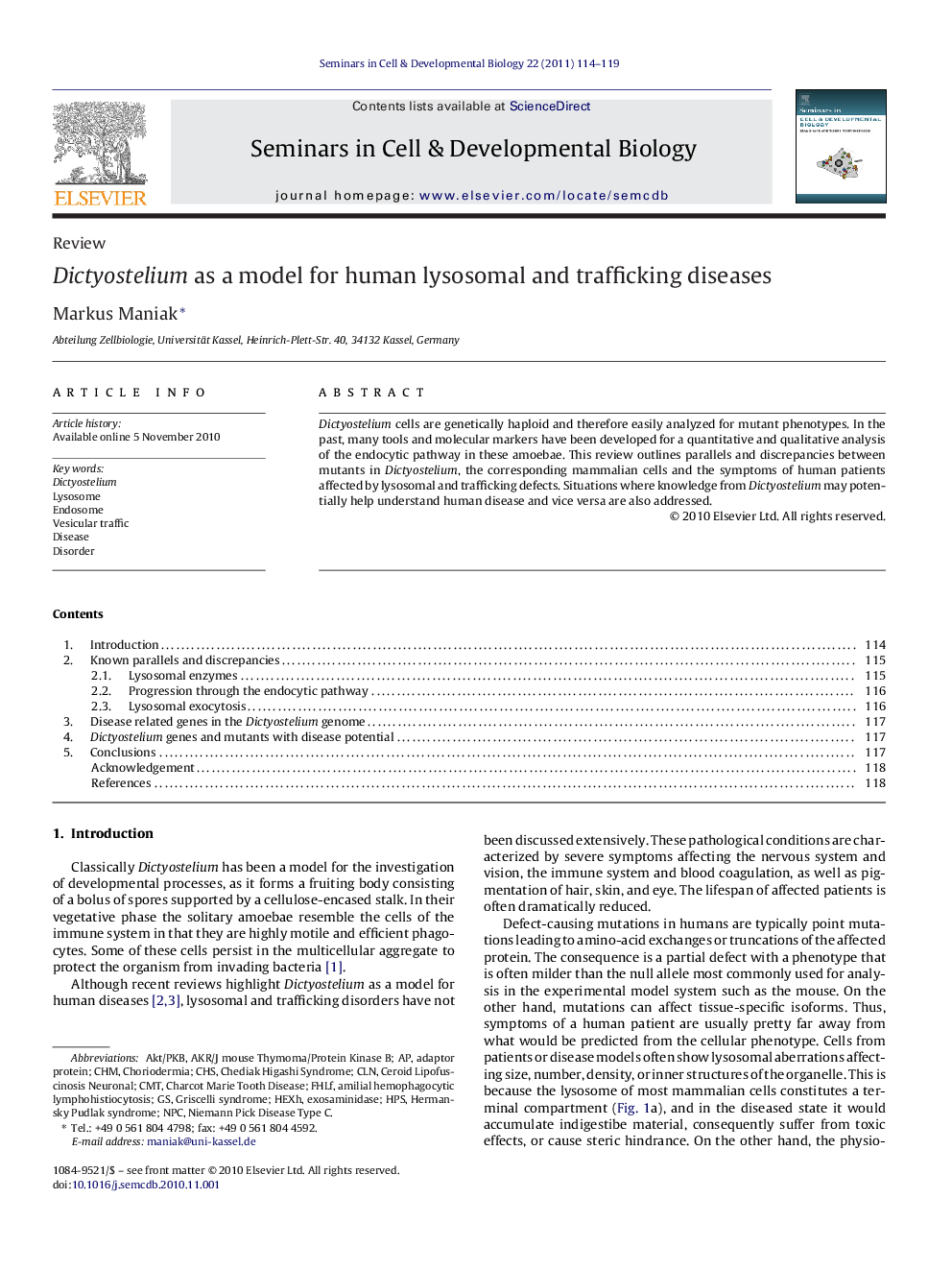| Article ID | Journal | Published Year | Pages | File Type |
|---|---|---|---|---|
| 10959217 | Seminars in Cell & Developmental Biology | 2011 | 6 Pages |
Abstract
Dictyostelium cells are genetically haploid and therefore easily analyzed for mutant phenotypes. In the past, many tools and molecular markers have been developed for a quantitative and qualitative analysis of the endocytic pathway in these amoebae. This review outlines parallels and discrepancies between mutants in Dictyostelium, the corresponding mammalian cells and the symptoms of human patients affected by lysosomal and trafficking defects. Situations where knowledge from Dictyostelium may potentially help understand human disease and vice versa are also addressed.
Keywords
Related Topics
Life Sciences
Biochemistry, Genetics and Molecular Biology
Cell Biology
Authors
Markus Maniak,
